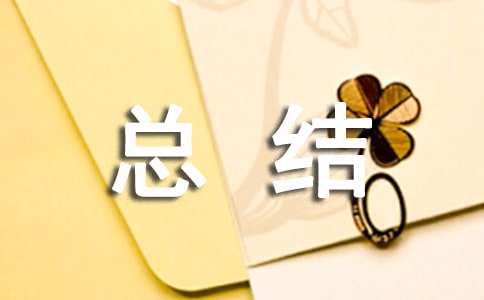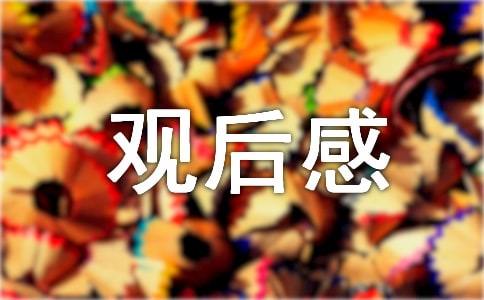下面是小编为大家整理的2022年中国传统故事英文版中国古代故事英文版(精选文档),供大家参考。希望对大家写作有帮助!

中国传统故事英文版中国古代故事英文版3篇
【篇1】中国传统故事英文版中国古代故事英文版
Traditional Chinese Food
There are so many traditional and special Chinese foods, according to the folk culture, district, religion, and festival. For the famous classes divided by district, there are style of Guangdong, Beijing, Shanghai, Sichuan, North-West, and so on…or by folk, there are kajia, Yunan, Fujian, etc. These all above mentioned styles are well-known in the worldwide. Here, introduce some special dishes, perhaps you have had it, or you have never heard :
Doufu(豆腐)
Doufu is the most popular food in Chinese Society.
It is also the main food in a faming family.
The recipe shown : Unicorn Doufu with Yunnan Ham(烹调方法:云南火腿酿豆腐)
Major Ingredients : Bean curd, Yunnan Ham, Black Mushrooms
Steamed Fish(清蒸鱼)
Chinese always make the fish recipes by steaming style.
Just only with some light soy sauce and some seasoning.(用黄豆酱以及一些调料即可)
The recipe shown : Steamed Snakehead in Chaozhou Style(潮州菜形式煮)
Major Ingredients : Snakehead, Preserved Lemon, Spring Onion
Dim Sum(点心,虾饺)
Dim Sum is the most famous food in world-wide.
It is a Guangdong Style snack which served as light meal.
The recipe shown : Steam Shrimp Dumpling
Major Ingredients : Shrimps, Pork, Wheat Flour for pastry
Lobster(龙虾)
Lobster is the famous style seafood in Hong Kong.
Some difference from the traditional western chef"s style..
The recipe shown : Lobster in High Stock
Major Ingredients : Lobster, Chicken Stock, Garlic(大蒜)
Dark Rice Vinegar With Ginger(姜醋黑米)
You perhaps have never heard this.....this is Guangdong style.
It is a supplementary diet for women who is weak, new mother.(给虚弱或者产后妈妈食用)
The recipe shown : Pig"s Fore Hands in Vinegar and Ginger
Ingredients : Sweet Dark Rice Vinegar, Pig"s Hands, Egg, Ginger
Eggs In Tea(茶叶蛋)
This is a very special snack of Guangdong..
It is very nice food for the party, gathering, with beer.
The recipe shown : Eggs In Chinese Tea
Ingredients : Eggs, Chinese Dark Tea
Festive Dishes(节日食品)
Because of the poor and hard lifestyle character of a farming society, the Chinese farming families would have food which were being get from the farming field, such as, potatoes, tomatoes, vegetable, sweet corn, mushrooms, etc. So, the Chinese will have many dishes of meat recipes like Chicken, Pork, Fish that they do not have in the normal days. The are some special snack, or to be said, festival food will be made during the Chinese festivals, Such as Sweet-Stick Cake and Turnip Pastry in Lunar New Year, Glutinous Rice Tamale in Dragon Boat Festival, Moon Cake in Middle Autumn Festival, etc, and Steamed Buns to the Birthday person……Main Food(主食)
Generally, we can divided the farming products of main food in China into 3 styles, those are, Rice in Southern and Eastern China, Wheat in Northern China and Sweet Corn in Middle, Northern, Western China. Because of their farming products, the people living in Southern China will have rice, congee or rice noodle as their main food, and who will have wheat made products like Bun, noodle, pancake in Northern China. The populace who living on seaside and lakeside will have seafood or lake fishes as meals. Of course, people can have any food as they want nowaday.
Taste Depends On Climate(气候影响下的口味)
There is a big difference about the diets between Northern and Southern China, that is, the dishes made by Northern Chefs are in heavier taste and those are comparably light in Southern Chefs’ recipes, sometimes, we say it is tasty as sweet and fresh in Southern Chinese food. In the Northern and Western Provinces of China like Lingxia, hebei, Sichuan , Shenxi, and Yunnan, the diets are made in hot and spicy, because of the humid cold weather and high altitude, Chinese people wonder that to perspire is a good method for preventing diseases caused by humidity and cold.
Chinese dumpling is one of the most important foods in Spring Festvial. Since the shape of Chinese dumplings is similar to ancient Chinese gold or silver ingots, they symbolize wealth. Traditionally, the members of a family get together to make dumplings during the New Year"s Eve. They may hide a coin in one of the dumplings. The person who finds the coin will likely have a good fortune in the New Year. Chinese dumpling is also popular in other Chinese holidays or festivals, so it is part of the Chinese culture or tradition.
Chinese dumpling is a delicious food. You can make a variety of Chinese dumplings using different fillings based on your taste and how various ingredients mixed together by you.
Making dumplings is really teamwork. Usually all family members will join the work. Some people started to make dumplings when they were kids in the family, so most Chinese know how to make dumplings.
The world we live in is full of varied cultures & traditions, each one featuring their own unique way of cooking & hence offering a diversified taste. Chinese cooking is one among the most followed ones.
As a nation, China has several festivals and traditions. Accordingly they have varied dishes for each event. In America, Chinese skills of cooking are looked upon as an art. For centuries together, their delicious delicacies are tickling the taste buds of the Americans.
Here are a few key features of Chinese cooking:
1. Chinese cooking is relatively quite easy and quick.
2. The specialties in Chinese items are categorized as per the nation"s culture, festivals & districts.
3. Some examples are steamed fish, Doufu, dark vinegar rice served with ginger, din sum, etc.
4. Cooked tea is the most preferred drink with the Chinese cuisine. In china, different varieties of tea are planted, hence, it becomes a part of their daily routine.
5. The basic ingredients of Chinese food are water and/or oil.
6. Chinese cooking takes care of everyone"s personalized tastes as the food items that can be added to these dishes are quite optional and can be modified as per an individual"s choice.
7. The recipe centers on - simply mixing the right items to match up to one"s taste.
8. The Chinese recipes do not involve lot of spices. They rather focus on the use of flavorings like cloves, aniseed, ginger root and Sichuan peppercorn.
9. Most oft, the Chinese chefs prefer using more of soy sauce, Shaoxing wine and oyster sauce. These add to the flavor and make the food more presentable.
10. Cooking the ingredients mainly involves some enlisted cooking techniques. These are shallow frying, stir-frying, roasting, deep frying, steaming, red cooking and stewing.
11. Stir frying implies frying the food at a very high heat in very little oil. In this case the food is cooked quite quickly as it is necessarily sliced in very small sized pieces.
12. In case of steaming, Chinese cooking traditionally involves the use of bamboo steamers. The bamboo steamers consist of a stack on their top so as to steam several items simultaneously.
13. To cook the larger pieces of meat, red cooking is the trick used in Chinese cooking.
14. Last but not the least, Chinese food features two key ingredients that are noodles and rice. People across the globe identify the Chinese culinary with noodles and rice. They are not only fast to cook but are also quite good to taste.
From being an indispensable fraction of the restaurant industry worldwide, to the households across the globe, the Chinese cuisine is loved by one and all.
It is quite simple to cook and with some tips and tricks, all of us can learn this cultural cooking.
The eastern and western cooking cultures
Western cooking by far is considered the more easier than Eastern cooking. This could be attributed to several reasons. In western cooking the ingredients used are available internationally and is generally used across continents and therefore access to ingredients is easier.
Even in terms of cooking itself it is far easier as relevant electrical appliances are easily available, as well as it is easy to use. Use of such appliances is certainly not a tedious task and is virtually at the push of a button. Of course certain amount of care will have to be taken in the use of any appliance but in general use of electrical appliance has become a way of life in the western world rather than an exception, due to the unsophisticated nature of using the appliances.
In western cooking culture, the vegetables are usually available world wide. Preparation of such vegetables are common to chefs in most parts of the world. Western dishes can be prepared in any part of the world to the same standards as where it originated from.
Eastern cooking culture is somewhat complex due to several reasons. One of the reasons is some of the ingredients are not available easily. However due to the diverse nature of ingredients the Eastern food is considered exotic. The varied climatic conditions ranging from the topics to the alpines, has helped to broaden the availability of aromatic ingredients Further in the East the food is so diverse that not only is there regional and country differences but also differences within the country itself. India is a very good example where there food that is consumed in the South is so very different to the food that is consumed in the North. In the North the main diet is wheat based and in the South it is rice based. In most cases, food is a marker of social and religious identity. Some embraced vegetarianism, due to Hindu philosophy and ahimsa and with the advent of Buddhism, this practice gained more popularity.
Preparation of Eastern food is also more time consuming as the masala which is a combination of spices is made by grinding them together and making a mixed powder. In the rural areas where people are not economically stable they grind manually which is time consuming as well and is also a little tedious. In the urban areas people will use grinders to make this mix.
Cooking of vegetables or meats takes much longer than it would when making western dishes.
Most chefs are comfortable in making western food but when it comes to eastern food they are skeptical as they are not able to produce the same quality of the dishes due to the reasons given herewith.
【篇2】中国传统故事英文版中国古代故事英文版
画蛇添足
Once upon a time, there was a nobleman who gave some wine to his servants.The wine was not enough for all.The servants finally decided whoever first finished drawing a snake on the ground would get the cup of wine.One of the servants finished drawing first.He took up the cup and was about to drink the wine when he thought of adding feet to the snake.He went on drawing.Then another servant finished drawing his snake. He snatched the wine cup and drank up the wine saying: “It is I who first finished drawing the snake.What you have drawn is not a snake.A snake doesn"t have feet.”
杞人忧天
In the Spring and Autumn Period, in the State of Qi, there was a man who always let his imagination run away with him. One day he even worried that the sky would fall on his head. He was so worried that he could neither eat nor sleep. Later, someone persuaded him that his fears were ground-less. This idiom satirizes those who worry unnecessarily.
东施效颦
In the Spring and Autumn Period (春秋时期,770-476 BC), there was a beauty in the State of Yue called Xishi. She often suffered from pains in her chest, and so she would often walk around doubled over and with her brows knitted. There was an ugly girl in the village called Dongshi who envied Xishi. Striving to emulate Xishi, she imitated her stoop, knitting her brows at the same time. She thought that this made her elegant, but in fact, it only made her more ugly. Later, this idiom came to be used to indicate improper imitation that produces the reverse effect.
草木皆兵
In AD 383, the king of Former Qin (秦朝), Fu Jian (fú jiān 苻坚), led a huge army to attack Eastern Jin. After losing the first round of fighting, Fu Jian looked down from a city wall, and was terrified when he saw the formidable battle array of the Eastern Jin army. And then looking at the mountains around, he mistook the grass and trees for enemy soldiers. As a result, when the nervous Fu Jian led his army into battle, it suffered a crushing defeat. This idiom describes how one can defeat oneself by imaging difficulties.
塞翁失马
Near China"s northern borders lived a man well versed in the practices of Taoism. His horse, for no reason at all, got into the territory of the northern tribes. Everyone commiserated with him.
"Perhaps this will soon turn out to be a blessing," said his father.
After a few months, his animal came back, leading a fine horse from the north. Everyone congratulated him.
"Perhaps this will soon turn out to be a cause of misfortune," said his father.
Since he was well-off and kept good horses, his son became fond of riding and eventually broke his thigh bone falling from a horse. Everyone commiserated with him.
"Perhaps this will soon turn out to be a blessing," said his father.
One year later, the northern tribes started a big invasion of the border regions. All able-bodied young men took up arms and fought against the invaders, and as a result, around the border nine out of ten men died. This man"s son did not join in the fighting because he was crippled and so both the boy and his father survived.
【篇3】中国传统故事英文版中国古代故事英文版
Once upon a time, there was a nobleman who gave some wine to his servants.The wine was not enough for all.The servants finally decided whoever first finished drawing a snake on the ground would get the cup of wine.One of the servants finished drawing first.He took up the cup and was about to drink the wine when he thought of adding feet to the snake.He went on drawing.Then another servant finished drawing his snake. He snatched the wine cup and drank up the wine saying: “It is I who first finished drawing the snake.What you have drawn is not a snake.A snake doesn"t have feet.”
杞人忧天
In the Spring and Autumn Period, in the State of Qi, there was a man who always let his imagination run away with him. One day he even worried that the sky would fall on his head. He was so worried that he could neither eat nor sleep. Later, someone persuaded him that his fears were ground-less. This idiom satirizes those who worry unnecessarily.
东施效颦
In the Spring and Autumn Period (春秋时期,770-476 BC), there was a beauty in the State of Yue called Xishi. She often suffered from pains in her chest, and so she would often walk around doubled over and with her brows knitted. There was an ugly girl in the village called Dongshi who envied Xishi. Striving to emulate Xishi, she imitated her stoop, knitting her brows at the same time. She thought that this made her elegant, but in fact, it only made her more ugly. Later, this idiom came to be used to indicate improper imitation that produces the reverse effect.
草木皆兵
In AD 383, the king of Former Qin (秦朝), Fu Jian (fú jiān 苻坚), led a huge army to attack Eastern Jin. After losing the first round of fighting, Fu Jian looked down from a city wall, and was terrified when he saw the formidable battle array of the Eastern Jin army. And then looking at the mountains around, he mistook the grass and trees for enemy soldiers. As a result, when the nervous Fu Jian led his army into battle, it suffered a crushing defeat. This idiom describes how one can defeat oneself by imaging difficulties.
塞翁失马
Near China"s northern borders lived a man well versed in the practices of Taoism. His horse, for no reason at all, got into the territory of the northern tribes. Everyone commiserated with him.
"Perhaps this will soon turn out to be a blessing," said his father.
After a few months, his animal came back, leading a fine horse from the north. Everyone congratulated him.
"Perhaps this will soon turn out to be a cause of misfortune," said his father.
Since he was well-off and kept good horses, his son became fond of riding and eventually broke his thigh bone falling from a horse. Everyone commiserated with him.
"Perhaps this will soon turn out to be a blessing," said his father.
One year later, the northern tribes started a big invasion of the border regions. All able-bodied young men took up arms and fought against the invaders, and as a result, around the border nine out of ten men died. This man"s son did not join in the fighting because he was crippled and so both the boy and his father survived.
推荐访问:英文版 故事 中国古代 中国传统故事英文版中国古代故事英文版 中国传统故事英文版中国古代故事英文版 英语版中国古代故事



